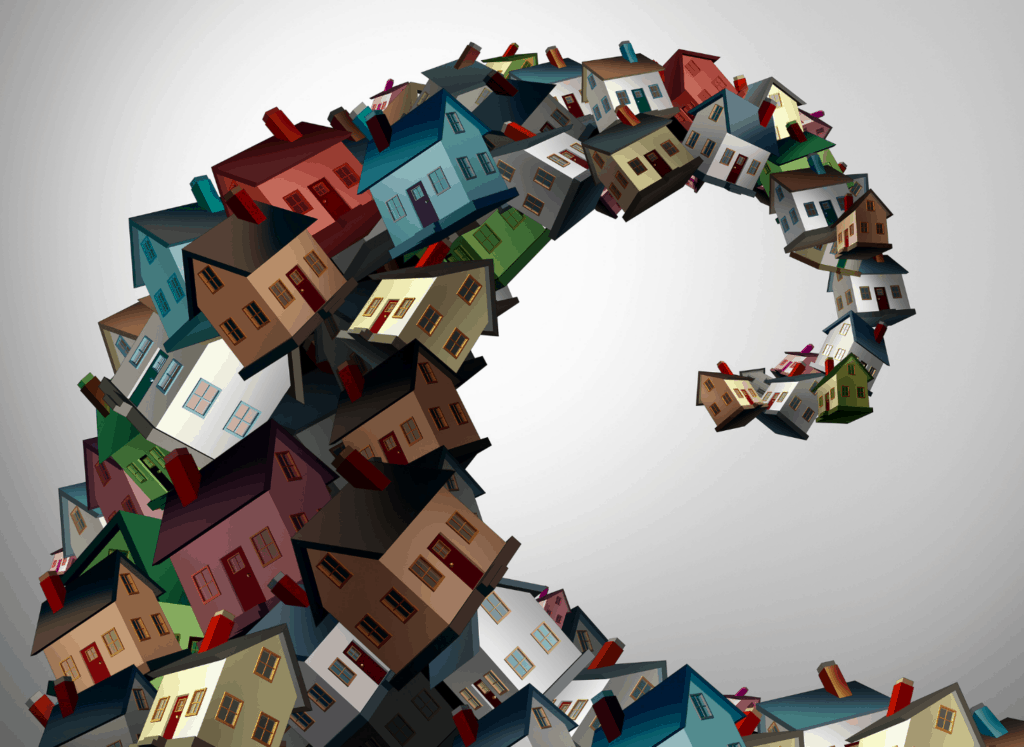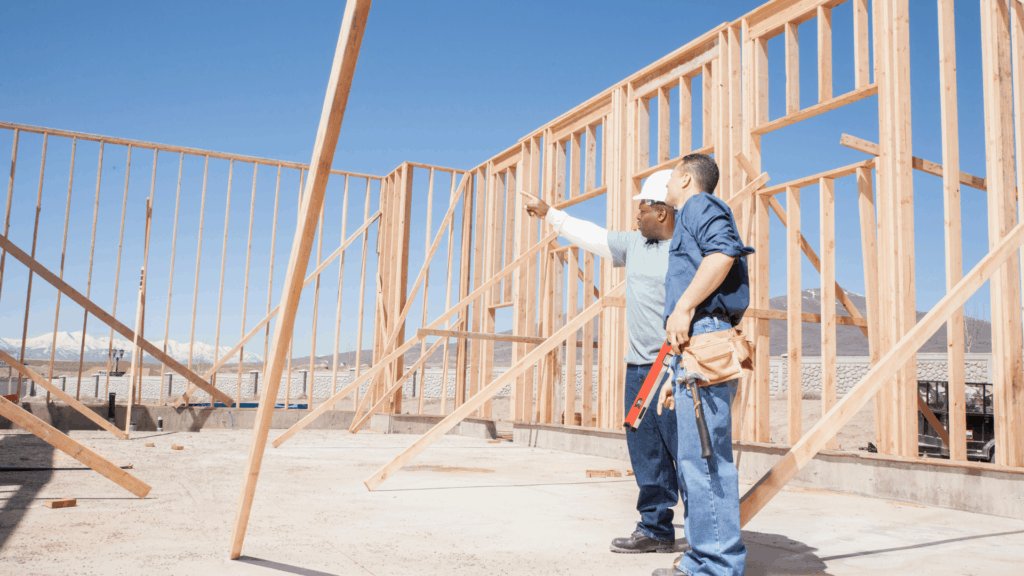
The Housing Affordability Crisis and the Multifamily Market
Rising home prices are correlated with rising apartment rents, and what drives both of these is demand for housing as a whole. Currently, housing prices and apartment rents are breaking records, and the fervor surrounding the housing market has many looking back at the Great Recession for comparisons. The fervor may be similar, but the contexts are much different. In short, there’s a housing crisis, not a housing crash.
Housing Supply and Demand
Housing demand is high, and housing supply is the other side of the equation. New housing supply, inclusive of apartments, single family homes, house boats, mobile homes, and more, needs to match growing demand, and if this does not happen, you can expect prices to go up.
Yes, there are exceptions to this rule and cases in which home prices and rents shift for reasons other than supply and demand, whether these are due to rent control, eviction moratoriums, or the trends and features of a neighborhood or multifamily submarket, but the defining relationship, when it comes to housing prices, is the relationship between supply and demand. Could foreign investors be driving apartment prices up in places like New York or Vancouver? This may be true for specific locations and circumstances, but foreign real estate investment is down for 2021. The fundamental forces are the supply of homes and the demand from people who want to live in them.

With this in mind, looking into the trends and factors that shape housing supply and demand reveals a number of elements that markedly distinguish our current situation from the Great Recession and highlight the affordability crisis we are facing today.
What is Happening Right Now
Home prices are very high, having risen at least 18.6% this year with little volatility. Apartment rents show a similar trend as average rents in the nation increase each month with room for further growth. A portion of these high prices could be due to increased investor attention, whether it’s for single family homes or increasingly attractive multifamily assets, but as noted above, investor interest is not the dominant factor here. Prices are rising because more people need more places to live.
The pandemic and recovery have contributed to a number of large-scale shifts in housing and lifestyle preferences, notably accelerating remote work trends, and some of these shifts may be more long-lasting than others. Workers may not be working from home as much as they did in the height of the pandemic, but the demand for more living space at home has remained. In fact, after the first tumultuous months of the pandemic, the housing market has been steadily heating up.

People worked at home and they naturally assigned a greater value to these spaces where they spend so much of their time, and this greater value has not decreased, even as more individuals return to work. Again, housing demand is not limited to single family homes, and apartment renters are on the lookout for more square footage in less dense garden-style communities just as homebuyers are looking for less density and more square footage, with both groups heading into the suburbs.
What can multifamily investors expect? Rents will continue to rise. While the pandemic has heightened the increase in housing demand and preference for more space, these very same shifts are also supported by longer-term trends (explained below).
Low Housing Supply
Alongside this greater demand, the low supply of housing has been a particularly pressing and anxiety-inducing element of the housing affordability crisis. Typically, higher home prices would be a strong incentive for developers to build new housing supply, but pandemic-related commodities and labor shortages have significantly hampered new construction plans.
Materials prices have been volatile and elevated for much of the year. At the time of this writing, lumber is down to a third of its value at its highpoint in the spring of 2021, but other commodities like steel have not seen similar decrease in prices, with shipping and logistics difficulties making it more costly and time-consuming to build new single family homes and multifamily properties.
More than the prices of materials, the labor issues associated with housing development are key to understanding the crisis we are currently facing. Whether through quarantines and lockdowns or through the economic upheaval brought about by the pandemic, workers were not able to produce the materials that go into making homes. Currently, the labor shortage in the housing industry is the biggest problem for developers. Again, the price of lumber may go back to normal, but these labor shortages are a significant problem that affects the whole building process, from creating the materials needed to build a home or apartment building, to shipping those materials to the right place, to the on-site development itself.

The supply issues associated with creating more housing supply will be resolved, but it will take some time for the labor market to stabilize. Homebuyers looking for a newly-built home will have longer to wait, and multifamily investors will also have to contend with project delays associated with the vast labor shortages on the development side. Apartment buyers in particular will have to adjust to the long-tail effect of labor shortages because these projects take years to complete and are an order of magnitude more complex than building a single-family home.
What can multifamily investors expect? Developers have and will continue to build new multifamily properties, but these developments will take longer to complete, and some of the elevated commodity prices of this year may still be a factor in apartments that are completed after the current labor and materials shortages are resolved. In short, investors should not expect multifamily supply to meet aggregate demand for the next few years.
Enormous Generational Shifts
Along with population growth as a whole, the age and makeup of the population is a key factor in determining the demand for housing. If a large percentage of people have children in the next several years, they may not need to buy a house, but once these children grow up and decide to live independently, that can have a major impact on the demand for housing.
Millennials, for example, are a larger generation than Generation X, and the median age of Millennials is at or near peak home-buying age. In short, more people than ever are reaching that age when they decide to live independently, and it’s having an enormous impact on the need for housing.

Another, albeit smaller, factor in the housing affordability crisis comprises those members of the Baby Boomer generation who have tended to remain in their homes for longer. These individuals may be living in homes that could support a larger family but are comfortable in the houses and neighborhoods where they have lived for many years. To be clear, this is not an argument for moving the aging population out of their homes; this is, however, another clear sign that the housing affordability crisis is the result of a number of factors.
What can multifamily investors expect? These generational trends play out over decades, and multifamily investors, who are familiar with taking a longer-term view with their decisions, should account for a consistent high demand for housing well beyond the next year or two.
Loans and Lending
Almost all Americans are not outright purchasing their home when they buy a single family home. Instead, they enter into an agreement with the bank, the bank purchases the home, and the home “buyer” sends regular mortgage/loan payments to the bank. Currently loan and mortgage rates are very low. This means that homebuyers, compared to a few years ago, can make the same payment but afford to buy a home at a higher price.

An important caveat here, and one that distinguishes our current situation from the housing crisis of the previous decade, is that banks are more selective about those to whom they are issuing a loan. The financial system is not vulnerable to risky sub-prime mortgages, and we are not facing the cascading foreclosures and lowering home values seen during the Great Recession.
What can multifamily investors expect? Current low rates have attracted many investors to the multifamily space. While inflation worries have many anxiously eyeing the decisions of the Federal Reserve Bank that may bring about some short-term rate increases, rates have been trending downwards for decades, if not centuries.
The confluence of all these factors—generational shifts, lower rates, commodity prices, supply shortages, and other factors not explicitly covered here—make our current moment an exceptional opportunity for investors. Multifamily prices have been extremely competitive, but with our current conditions, there is a multitude of compelling reasons to invest in multifamily properties.
Gray Capital is committed to sharing the most up-to-date information on the commercial and multifamily real estate markets. Click the button below to sign up for our free weekly newsletter to stay up to date on the latest research, reports, and current events; and if you are interested in becoming an investor with Gray Capital, click the button below to join the Gray Capital Investment Club.